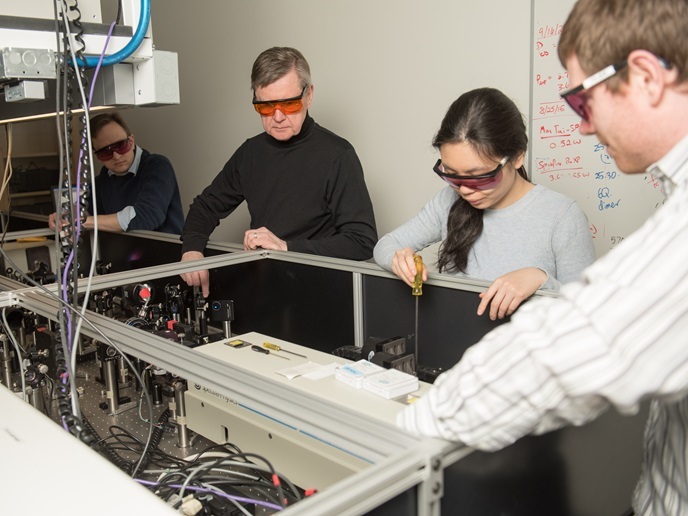Putting a new spin on molecular quantum devices
Chirality(opens in new window) is a principle in nature where objects, such as molecules, cannot be superimposed on their mirror image, similar to left and right hands. In physics, it is evidenced by particle spin, which can be clockwise or counterclockwise. It is a phenomenon with exciting implications for game-changing innovations. “Harnessing the way biological molecules use chirality to recognize and interact with one another, could help control information flow, increasing the processing power of quantum applications,” explains Roberta Sessoli(opens in new window) from the University of Florence. When an electrical bias is applied, chirality can be exploited through a phenomenon called chirality-induced spin selectivity(opens in new window) (CISS), whereby electrons travelling through a chiral medium reach their destination with a dominant spin direction. “While controlling spin handedness is fairly easy, it requires very high magnetic fields and/or low temperatures, limiting its use,” says Sessoli, principal investigator of the CASTLE project, which was funded by the European Research Council(opens in new window).
Letting nature do the heavy lifting
To address this challenge, the project brought together teams on both sides of the Atlantic to find solutions where nature does the heavy lifting. However, the CASTLE team first had to confirm that the CISS effect of interest originates from the properties of the chiral molecules, through which the electrons flow. The EU-funded project enabled U.S. teams to tap into European knowledge and expertise, and vice versa. A system was created by Northwestern University, a U.S.-based project team member. This system involved a molecular component that readily accepts electrons (the acceptor) and another that prefers to release them (the donor). These were linked to opposite ends of a chiral molecule. Shining light on the molecule rapidly moves the electron from the donor through the chiral molecule to the acceptor, resulting in controlled rotation of the electron spin. “It had been unknown whether the CISS effect was due to the metal electrodes in devices or an intrinsic property of the molecule,” remarks Michael Wasielewski(opens in new window), who leads the U.S. team at Northwestern University(opens in new window). “We have shown conclusively that it is indeed a molecular property.”
Fabricating quantum circuits
Using light to move electrons through chiral materials offers the possibility of fabricating quantum circuits by assembling a network of chiral molecular components. As it is still unclear how the size of the CISS effect affects the degree of electron spin rotation over a given distance, instrumentation is under development for quantifying the effect, with early modeling already proving capable of predictions. The multinational and highly collaborative nature of CASTLE has been key to these early successes. “None of us could do this alone,” Sessoli notes. U.S. team members, for example, have brought critical knowledge about photo-induced electron transfer and magnetic resonance measurement techniques. “Exposing early-stage researchers to the relative strengths of different approaches – especially the U.S. emphasis on cost-benefit analysis – has complemented the more collaborative, experimental European approach,” adds Sessoli. At the same time, U.S. researchers were able to participate in a multinational effort that has advanced fundamental knowledge.
New adventures in quantum devices
While CASTLE will not generate specific devices – rather guidance on designs – there are some clear potential applications. Wasielewski cites quantum sensing, alongside small quantum processors networked with nanoscale materials for nanoscale devices, adding: “The physics community is excited about this.” Other areas under investigation(opens in new window) include using the CISS effect in short DNA duplexes to control spin in computer chips, while developing a ‘paradigm of spin to charge conversion’ which holds out the possibility of ‘spin filtering’ – or stopping electrons without the right spin for more control. “The ubiquitous nature of this phenomenon makes it highly transferable to other fields, such as light harvesting. With spin everywhere, and chirality selected by nature over millions of years, there are many possibilities yet to be identified by combining both properties; we might be rewriting some textbook dogmas,” concludes Sessoli.



